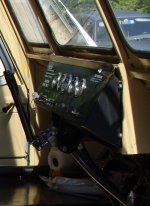I am fabricating disk brakes with calipers from Toyota vans onto the driver/axel shafts. They will be powered by a couple of tercell master cylinders mounted to the stock steering wands. I know they will be more exposed than the diff steering bands but I dont intend on doing alot of mud slumming and they have got to work better.
Has anyone tried this or have any advise?
The system is nearly ready to go but i am trying to decide whether to re-tube or foam fill my tires while I have everything apart.
Any suggestions???
Has anyone tried this or have any advise?
The system is nearly ready to go but i am trying to decide whether to re-tube or foam fill my tires while I have everything apart.
Any suggestions???


